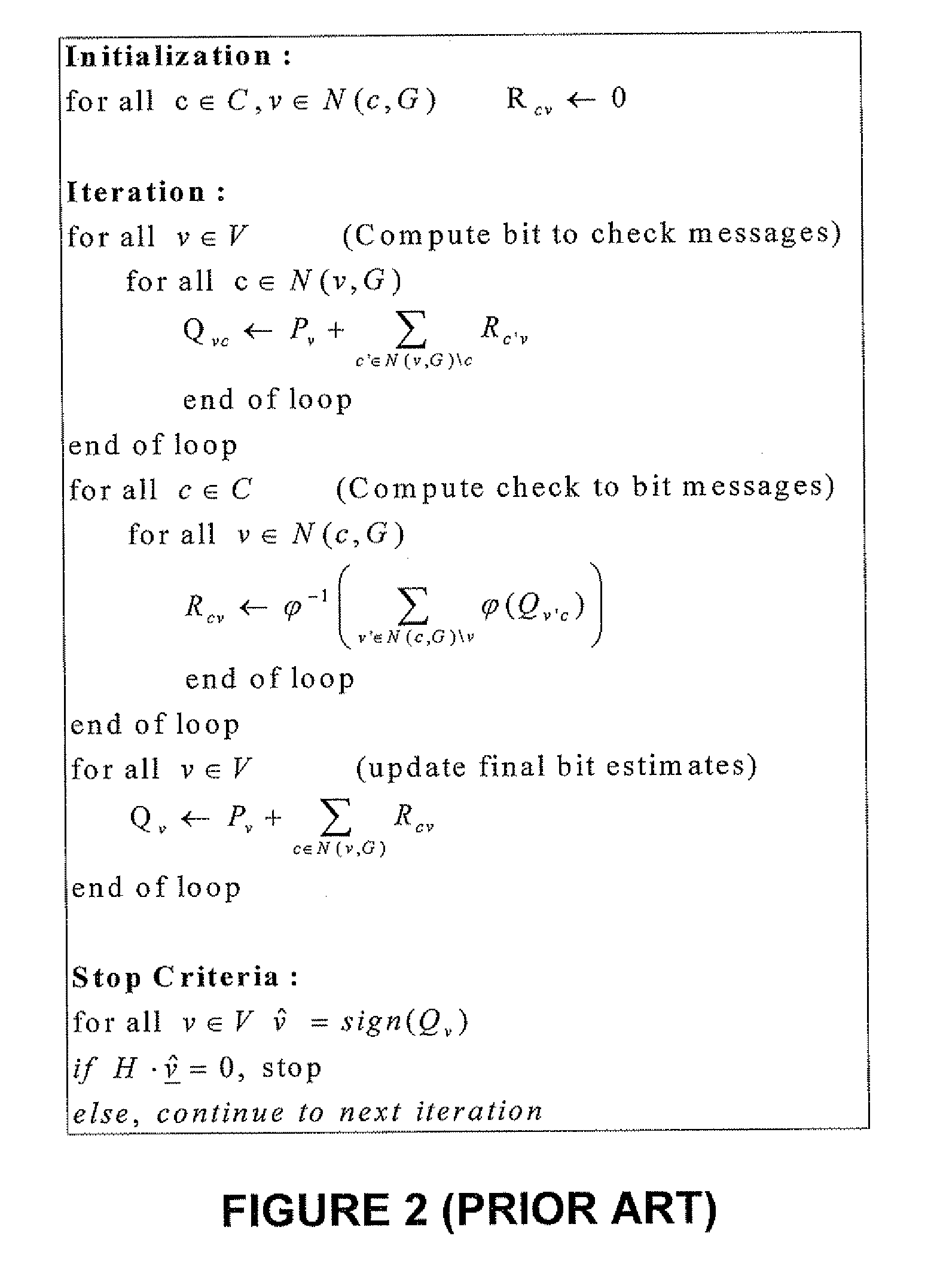Memory-efficient LDPC decoding
a memory-efficient, ldpc technology, applied in the direction of coding, instruments, code conversion, etc., can solve the problems of the error rate of the output block of the required decoder, the proportionality of the memory complexity of the decoding hardware to the code length, and the effect is problemati
- Summary
- Abstract
- Description
- Claims
- Application Information
AI Technical Summary
Benefits of technology
Problems solved by technology
Method used
Image
Examples
Embodiment Construction
[0095]The principles and operation of low-complexity LPDC decoding may be better understood with reference to the drawings and the accompanying description.
[0096]In conventional decoders for LDPC codes, the memory required by the decoder is proportional to the code length N (equal to the number of variable nodes in the coders underlying graph |V|) and to the number of edges in the code's underlying graph |E|. In efficient implementations (e.g. based on serially scheduled decoders), the required memory can be as small as (|V|+|E|)*bpm bits, where |V| is the number of bit estimations, |E| is the number of edge messages and bpm is the number of bits per message stored in the memory of the decoder (note that we assume here that the same number of bits is required for storing bit estimation and edge message, for the sake of simplicity, though this is not necessarily the case). The decoder presented herein uses much smaller memory for implementing the decoding, storing only a small fracti...
PUM
 Login to View More
Login to View More Abstract
Description
Claims
Application Information
 Login to View More
Login to View More - R&D
- Intellectual Property
- Life Sciences
- Materials
- Tech Scout
- Unparalleled Data Quality
- Higher Quality Content
- 60% Fewer Hallucinations
Browse by: Latest US Patents, China's latest patents, Technical Efficacy Thesaurus, Application Domain, Technology Topic, Popular Technical Reports.
© 2025 PatSnap. All rights reserved.Legal|Privacy policy|Modern Slavery Act Transparency Statement|Sitemap|About US| Contact US: help@patsnap.com



